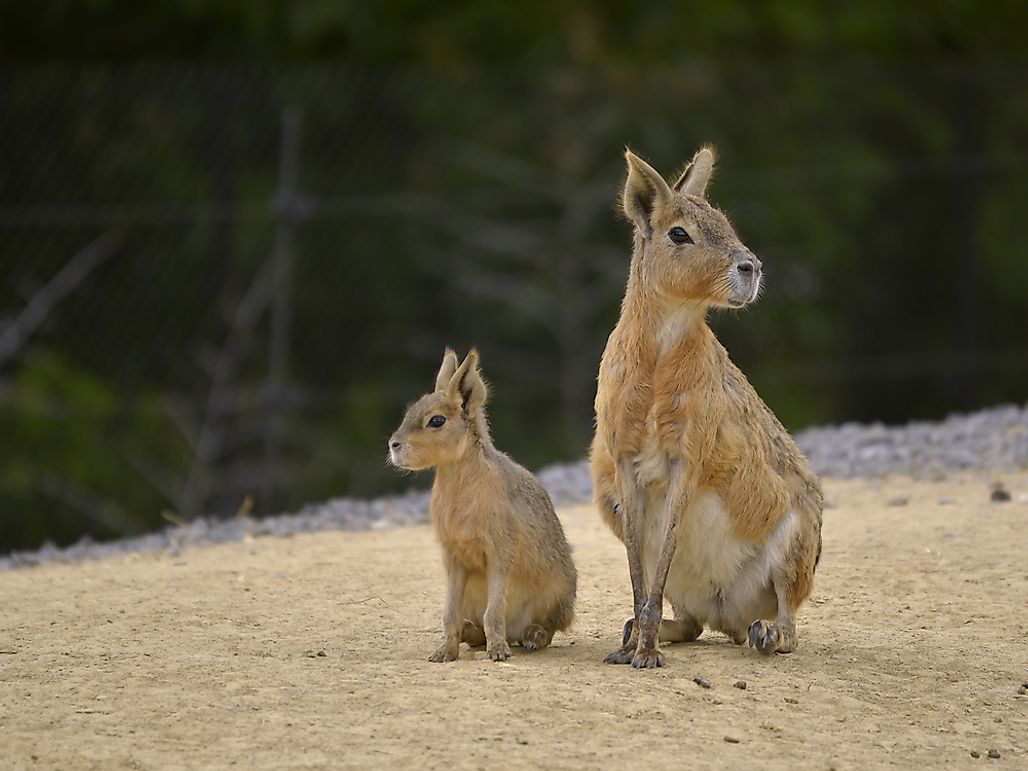Patagonian Mara (Dolichotis patagonum)

Blurb from the Author: When I first saw this species I immediately thought of the outdoor clothing brand Patagonia! After doing some further research of the clothing brand I found it was named after the Patagonia mountain range shared by Argentina and Chile. Since this species is decreasing and further research is needed to determine conservation methods and population numbers I think that it would be helpful to have the brand make patagonian mara themed clothing and donate some of the profits made to these conservation efforts.
Life Span: ~14 years in captivity (unknown in the wild, possibly 7-10 yrs)
Population Size: Unknown (but decreasing)
Geographical Location: They are endemic to Patagonia, Argentina in South America (hence the name). The habitat types they thrive in include grasslands, shrublands, forests, and savanas.
Diet: They are strictly herbaceous eating foods such as herbaceous matter including grasses (specifically Pappophorum grass), cacti, fruits, flowers, and seeds.
Size: 17-35 lbs, 29-75 cm long, 45 cm tall
Conservation Status: Near threatened
Predators: The patagonian mara have many predators including birds, canids, felids, and humans (due to poaching and habitat alteration).
Reproduction: The mara remain in a monogamous pair over their entire lifetime. The mating season for the mara is from August through September. The typical gestation period for the mara ranges between 91-111 days and they usually produce 2 pups per liter.
Communication: There has not been much research done about the communication behaviors of the mara but it is known they mainly communicate through scent marking (anal glands) and vocalizations that include grunts and screams.
- Fun Facts:
- They can reach up to 45 km/hr
- World’s third largest rodent
- They act as seed dispersers
- Are able to jump 6 ft in the air
- They are docile animals and can be kept as pets!
- Because their front legs are shorter than their back legs they make a movement known as “stotting”
- Also known as the patagonian cavy or “” hare

Websites Used for Research: http://animalia.bio/patagonian-mara https://nationalzoo.si.edu/animals/patagonian-mara https://animaldiversity.org/accounts/Dolichotis_patagonum/
References: Mascow, M. 2011. “Dolichotis patagonum” (On-line), Animal Diversity Web. Accessed February 22, 2020 at https://animaldiversity.org/accounts/Dolichotis_patagonum/